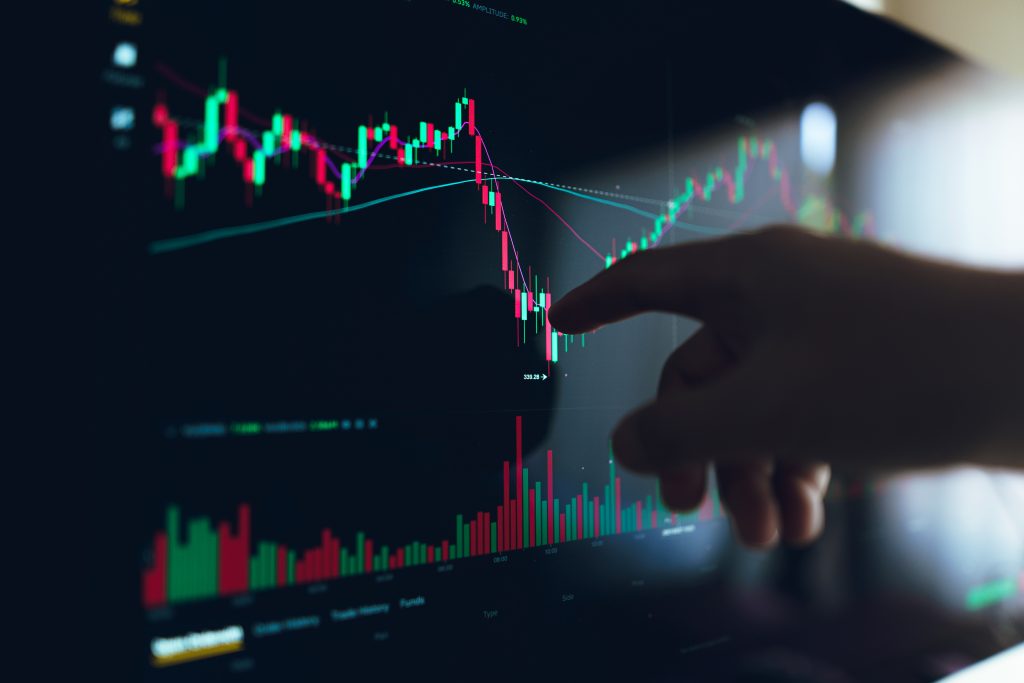Moving averages (MA) are among the most popular technical indicators used by traders to analyze price trends and make better trading decisions. Whether you’re new to forex, stocks, or crypto trading, understanding moving averages can give you an edge by helping you identify the direction of the market more clearly.
This guide breaks down what moving averages are, how they work, why traders use them, and how to choose the right type and length of moving average for your trading strategy.
What Is a Moving Average?
A moving average is a technical indicator that smooths out price data by creating a constantly updated average price. This average is calculated over a specific number of time periods, such as the last 10, 20, or 50 closing prices.
By plotting the average of those past prices on a chart, traders can see a line (the moving average) that helps them detect trends more clearly, without being distracted by day-to-day price fluctuations.
Why Traders Use Moving Averages
1. To Filter Out Market Noise
In the real world, prices rarely move in a straight line. They go up and down, sometimes sharply, because of news, emotions, or random market activity. A moving average filters out this “noise” and lets traders focus on the broader price movement.
2. To Identify the Trend Direction
By observing the slope of the moving average, traders can quickly determine whether the market is trending up, down, or sideways. An upward slope suggests a bullish trend, while a downward slope signals a bearish one.
3. To Confirm Support and Resistance Levels
Many traders use moving averages to identify dynamic support or resistance zones. When price touches and bounces off a moving average, it often confirms the strength of that level.
4. To Signal Potential Entry or Exit Points
Traders often use moving average crossovers (when two MAs intersect) or price-MA crossovers (when price crosses above or below an MA) to decide when to enter or exit trades.
How a Moving Average Appears on a Chart
When plotted, a moving average appears as a smooth, curved line on top of a candlestick or price chart. Since it overlays the price, it’s called a chart overlay indicator — as opposed to indicators like RSI or MACD, which are plotted separately.
A simple example: Let’s say you use a 10-period moving average. The chart will display the average closing price of the last 10 candles, continuously updating as new candles form.
The Main Types of Moving Averages

There are several types of moving averages, but the two most commonly used are:
1. Simple Moving Average (SMA)
- The Simple Moving Average (SMA) is the average of the closing prices over a specific period.
- It gives equal weight to all data points.
- Example: A 20-day SMA adds the closing prices of the past 20 days and divides by 20.
2. Exponential Moving Average (EMA)
- The Exponential Moving Average (EMA) gives more weight to recent prices.
- This makes it more responsive to recent market moves.
- Traders prefer the EMA when they want to capture quicker trend changes.
How to Choose the Right Moving Average Length
The “length” of a moving average refers to the number of time periods it uses to calculate the average. The length you choose depends on your trading style and time frame.
1. Short-Term MAs (5 to 20 periods)
- React quickly to price changes.
- More sensitive to short-term trends.
- Useful for day traders and scalpers.
2. Medium-Term MAs (20 to 60 periods)
- Offer a balance between short-term and long-term signals.
- Suitable for swing traders.
3. Long-Term MAs (100 to 200 periods)
- Smoother and slower to react.
- Help confirm long-term trend direction.
- Commonly used by position traders and investors.
Pros and Cons of Short vs. Long Moving Averages
| Length | Pros | Cons |
| Short (e.g., 10 EMA) | Quick response to price moves | More false signals, more noise |
| Long (e.g., 200 SMA) | Reliable for long-term trends | Lags behind current price, slower signals |
Common Moving Average Combinations
Many trading strategies use more than one moving average at the same time. Here are some popular combinations:
1. Golden Cross & Death Cross
- Golden Cross: 50-day MA crosses above the 200-day MA → bullish signal.
- Death Cross: 50-day MA crosses below the 200-day MA → bearish signal.
2. Short vs. Long MA Crossovers
- 9 EMA vs. 21 EMA → useful for identifying momentum shifts.
- Price crossing above a 50 or 100 SMA → possible uptrend start.
How to Use Moving Averages in a Trading Strategy
Step 1: Identify the Trend
Use a long-term MA (like the 100 or 200 SMA) to determine the overall market direction. If the price is above the long MA, the market is likely in an uptrend.
Step 2: Use Shorter MAs for Entry Points
Once the trend is confirmed, use shorter MAs (like 10 EMA or 20 EMA) to find good entry or exit points within the trend.
Step 3: Confirm with Other Indicators
Moving averages work best when combined with other technical tools like RSI, MACD, or trendlines to avoid false signals.
Mistakes to Avoid When Using Moving Averages
- Using only one MA: Combining multiple MAs gives a clearer picture.
- Choosing the wrong timeframe: Match the MA length with your trading style.
- Blindly following crossovers: Always confirm with other signals or price action.
- Forcing trades in sideways markets: MAs work best in trending conditions.
Real-World Example: EUR/USD Chart
Suppose you plot a 50 EMA on a 4-hour EUR/USD chart. You notice that:
- When the price stays above the 50 EMA, the trend continues upward.
- When it breaks below and stays under, it signals a possible trend reversal.
- You combine this with RSI confirmation to enter trades only when momentum supports the trend.
Moving Averages in Forex vs. Stocks
While the concept of moving averages applies to all markets, here’s a key difference:
- Forex traders often use shorter periods (10–50) on intraday charts.
- Stock traders and investors tend to rely more on longer periods (50–200) due to market hours and slower trend developments.
Moving averages are powerful tools that can help you spot trends, confirm signals, and improve your trading decisions. While they’re simple in concept, their real strength lies in how you combine them with other indicators and how you adapt them to your trading style.
Take time to experiment with different types and lengths of moving averages. Backtest strategies before using them in live markets, and always stay flexible—no single indicator can predict the market with 100% certainty.
Ready to Trade Smarter with Vestrado?
Moving averages are just the beginning. At Vestrado, we make technical analysis easy to understand and apply, even for beginners. Open a free demo account today and explore how moving averages work in real time without risking your money.
Start trading smarter with Vestrado. Try it free today.





